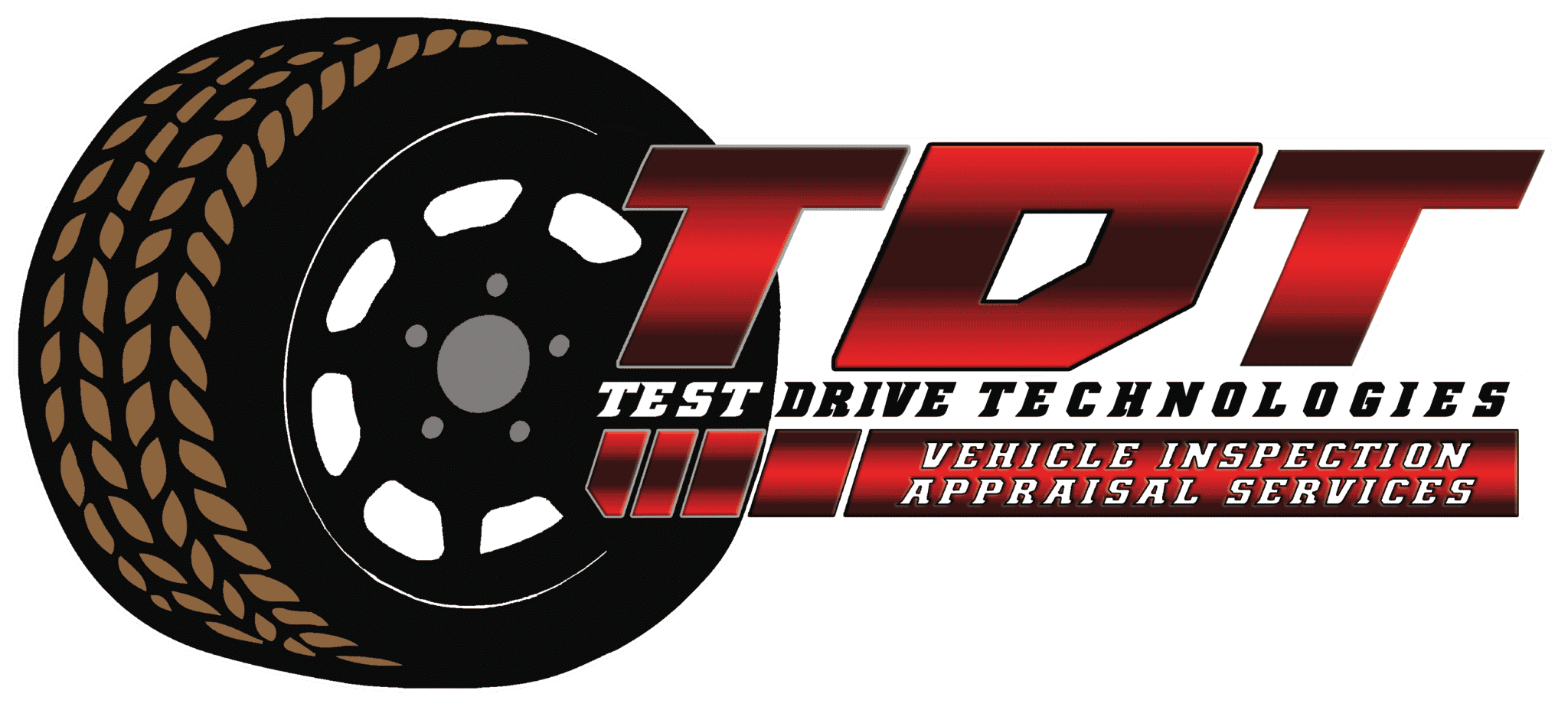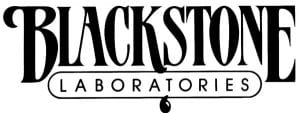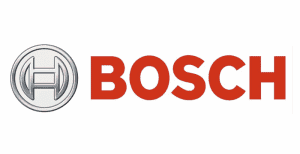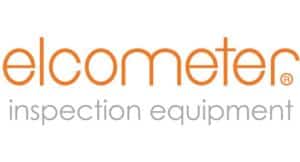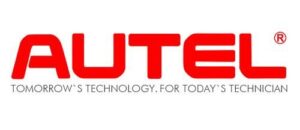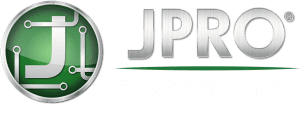Commercial Truck Inspections can save you thousands on fines and repair bills. The requirements for a semi-truck, also known as a commercial motor vehicle (CMV), can vary by jurisdiction, but here are some common DOT (Department of Transportation) requirements in the United States:
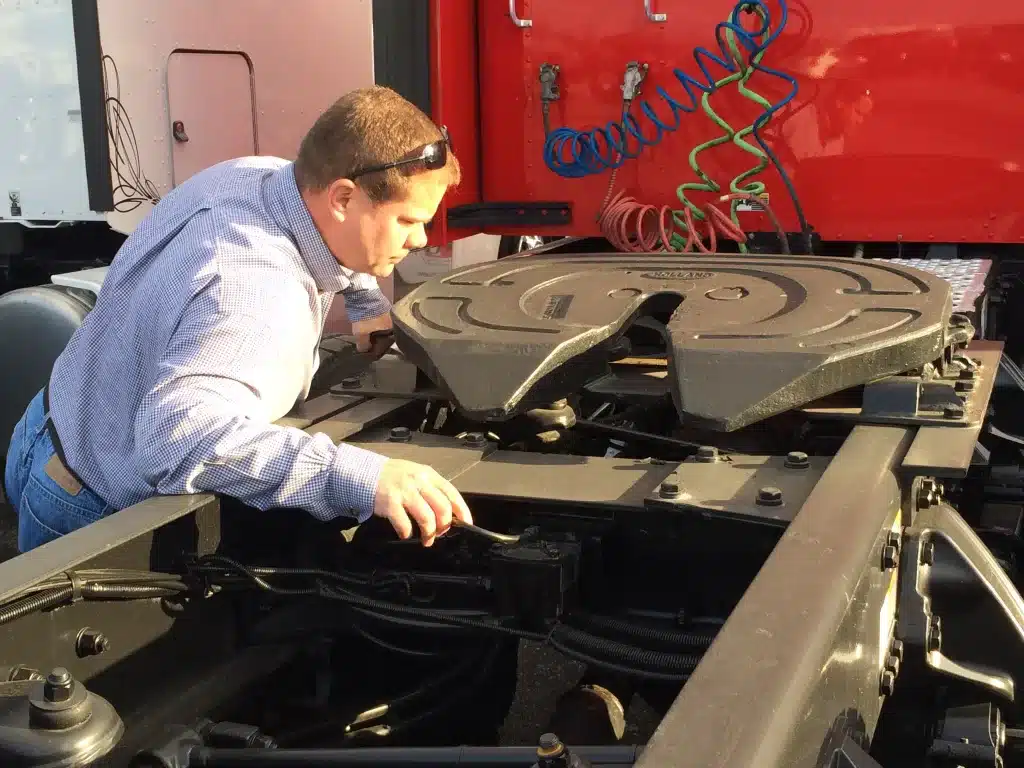
- Commercial Driver’s License (CDL): The driver must possess a valid CDL specific to the type of CMV being operated (Class A, B, or C).
- Vehicle Registration: The truck must have proper registration and display the necessary identification, including USDOT numbers.
- USDOT Number: Most CMVs engaged in interstate commerce must have a USDOT number displayed on the vehicle. Intrastate requirements may vary.
- Insurance: Adequate liability insurance coverage is required, and proof of insurance must be carried in the vehicle.
- Vehicle Inspection: Regular vehicle inspections, including pre-trip and post-trip inspections, are required to ensure the vehicle’s safety and roadworthiness.
- Hours of Service (HOS): Drivers must adhere to HOS regulations, which dictate maximum driving and on-duty time and require logbook or Electronic Logging Device (ELD) records.
- Drug and Alcohol Testing: Drivers are subject to drug and alcohol testing as mandated by DOT regulations.
- Hazardous Materials (HAZMAT): If transporting hazardous materials, additional permits and compliance with HAZMAT regulations are necessary.
- Weight Limits: Trucks must adhere to weight limits set by federal and state regulations.
- Vehicle Markings: Proper vehicle markings, including placards for hazardous materials, are required.
- Vehicle Maintenance: CMVs must be properly maintained to meet safety standards.
- Brake System: Trucks must have a functioning air brake system.
- Lighting and Reflectors: Proper lighting and reflective devices are required for visibility and safety.
- Fire Extinguisher: A fire extinguisher suitable for CMVs should be on board.
- Emergency Kit: An emergency kit containing necessary supplies is often required.
Here are some specific DOT requirements related to the condition of a semi-truck (commercial motor vehicle or CMV) in the United States:
Brake System: The CMV’s brake system must be in good working condition. Regular inspections and maintenance are essential to ensure proper braking performance.
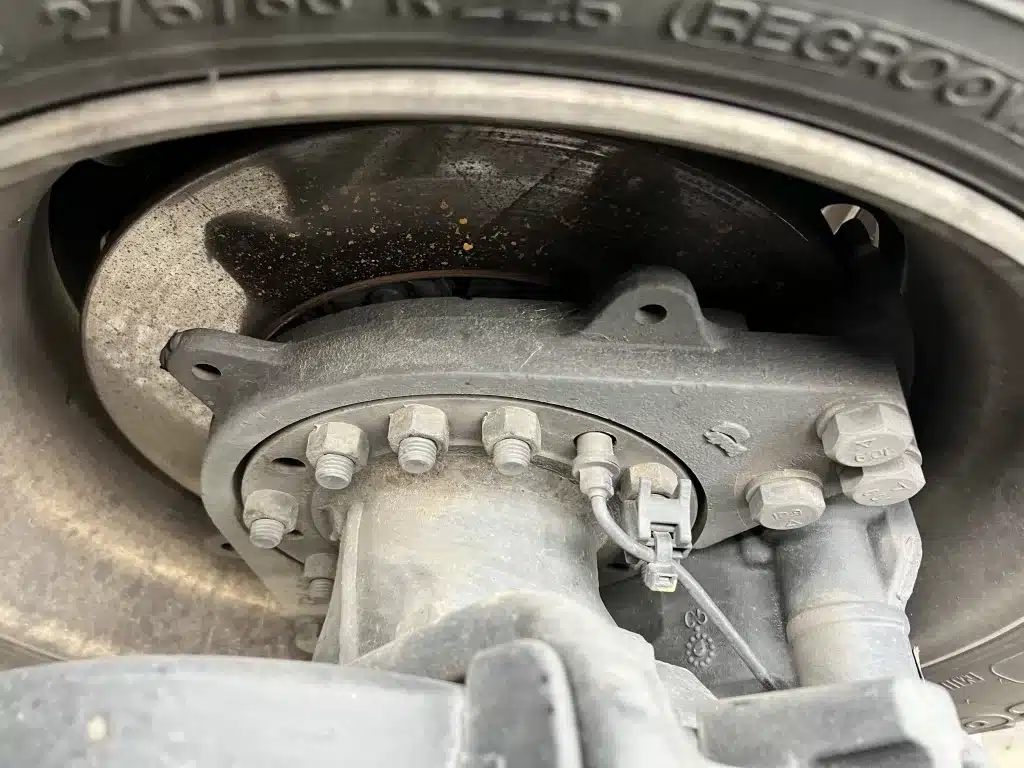
The Department of Transportation (DOT) in the United States has specific requirements for air brake systems used in commercial motor vehicles (CMVs), including semi-trucks. These requirements are outlined in the Federal Motor Carrier Safety Regulations (FMCSRs) found in Title 49 of the Code of Federal Regulations (CFR), Part 393 – Parts and Accessories Necessary for Safe Operation.
Here are some key DOT air brake system requirements for CMVs:
Brake System Components: The air brake system must include all necessary components, including air compressors, air storage tanks, brake chambers, and slack adjusters. The air brake system must be capable of safely stopping the CMV within prescribed distances under various conditions. It should provide reliable and effective braking performance. The air brake system must maintain adequate air pressure for proper operation. The air pressure must be sufficient to release and apply the brakes as needed. There should be no significant air leakage from the brake system. Air pressure loss should not exceed certain limits during a specific time period when the CMV is not in use. CMVs must have an emergency/parking brake system that holds the vehicle stationary when parked. It should engage automatically if air pressure drops below a certain level. ABS is required on most CMVs with air brake systems. ABS helps prevent wheel lockup during hard braking, improving vehicle stability and control. Brakes must be properly adjusted. Manual or automatic slack adjusters must be in good working condition, ensuring that brakes are not overly loose or overly tight. CMVs must be equipped with a low air pressure warning device to alert the driver when air pressure falls below a safe level. Regular brake inspections and maintenance are required. Brake components must be inspected, repaired, and replaced as needed to maintain safe operation. The air brake system should not contain oil, grease, or other contaminants that could affect brake performance.
It’s important for CMV operators and maintenance personnel to be knowledgeable about these requirements and to conduct regular inspections and maintenance to ensure the air brake system’s proper functioning. Compliance with these regulations is essential for the safety of the driver and others on the road.
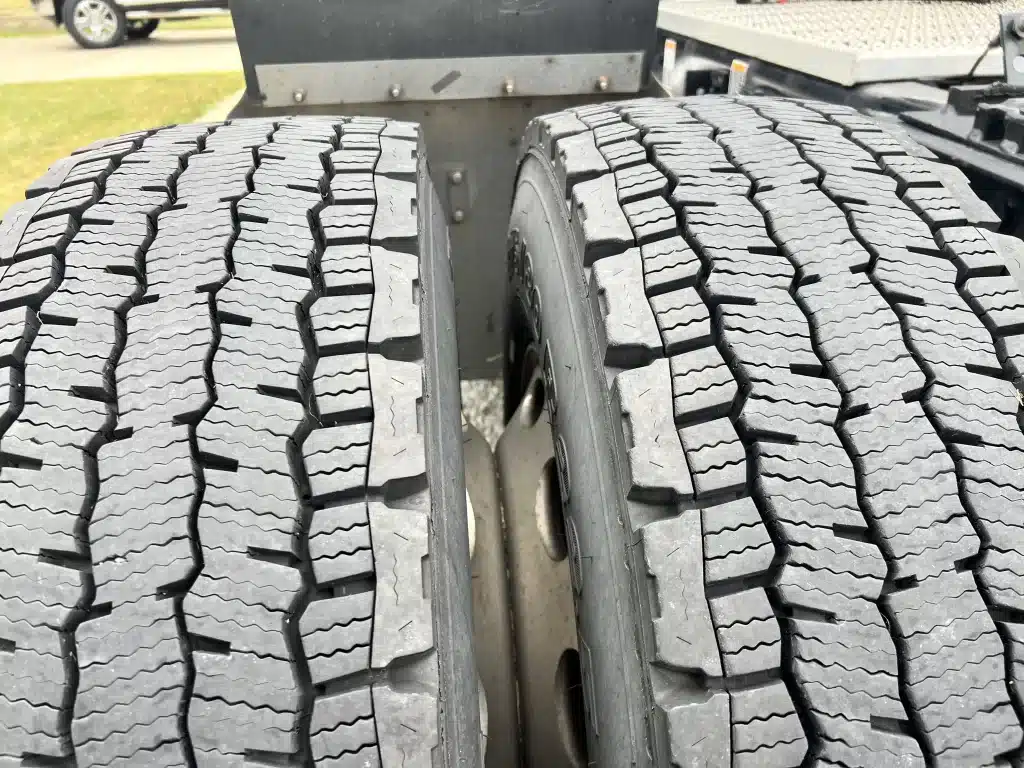
Tires and Wheels: Tires must have adequate tread depth and be free from major defects. Wheels and rims should not have visible cracks or damage. The Department of Transportation (DOT) in the United States has specific regulations related to tires and wheels for commercial motor vehicles (CMVs), including semi-trucks. These regulations are outlined in the Federal Motor Carrier Safety Regulations (FMCSRs) found in Title 49 of the Code of Federal Regulations (CFR), Part 393 – Parts and Accessories Necessary for Safe Operation. Below are some key DOT regulations concerning tires and wheels: Tires must be in good condition, free from damage or defects that could make them unsafe to operate. This includes ensuring that tires have adequate tread depth and are not excessively worn. Tires must be properly inflated to the manufacturer’s recommended pressure. Underinflated or overinflated tires can affect vehicle stability and handling. Tires used on CMVs must be the appropriate size and type for the vehicle and its intended use. Mixing tire sizes and types on the same axle is generally prohibited. Tires on dual-wheel positions (e.g., dual rear wheels) must be closely matched in terms of size, construction, and load-carrying capacity. Tires must have a sufficient load-carrying capacity to support the weight of the CMV and its cargo. Load ratings should be compatible with the vehicle’s axle and gross weight ratings. Retreaded tires are allowed, but they must meet specific safety standards. Retreaded tires should not have exposed cords or defects that could lead to failure. Wheels (rims) must be in good condition, free from cracks, dents, or other damage that could affect their structural integrity. Lug nuts or other fasteners used to secure the wheels must be properly tightened and torqued to the manufacturer’s specifications. Loose or missing wheel fasteners can lead to wheel separation. CMVs equipped with dual tires on each wheel position must have the proper spacing and alignment to prevent tire-to-tire contact. Tires should have appropriate markings indicating their size, load-carrying capacity, and speed rating. CMVs should carry spare tires, and they should be in good condition and properly inflated. If using tire chains in certain weather conditions, they should be compatible with the tire size and type, and their use should comply with local regulations.
It’s essential for CMV operators and maintenance personnel to be aware of these regulations and conduct regular inspections to ensure tire and wheel safety and compliance. Properly maintained tires and wheels are crucial for the safe operation of commercial vehicles on the road. All lights (headlights, taillights, turn signals, brake lights) and reflective devices must be functional and properly positioned for visibility. The Department of Transportation (DOT) in the United States has specific regulations regarding lighting and markings for commercial motor vehicles (CMVs), including semi-trucks. These regulations are outlined in the Federal Motor Carrier Safety Regulations (FMCSRs) found in Title 49 of the Code of Federal Regulations (CFR), Part 393 – Parts and Accessories Necessary for Safe Operation.
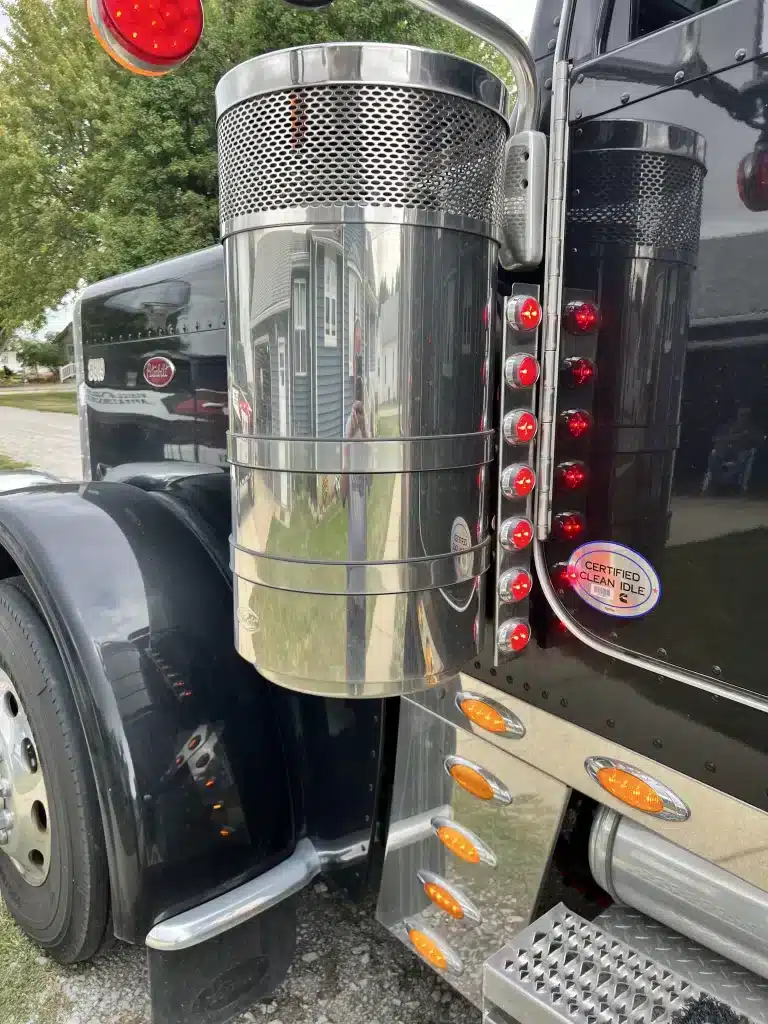
Here are key DOT regulations related to lighting and markings for CMVs: CMVs must have functioning headlights that provide adequate illumination of the road ahead. Headlights should be turned on during nighttime operation and under certain adverse weather conditions. CMVs must have operational taillights that are visible from the rear. Taillights should be illuminated during nighttime operation. CMVs must be equipped with turn signal lamps that indicate the driver’s intention to turn or change lanes. Turn signals must be operational. CMVs must have functioning brake lights that activate when the brakes are applied. Brake lights should be visible from the rear. CMVs are required to have hazard warning lights (flashing amber lights) that can be activated to indicate an emergency or a temporarily stopped or slowed vehicle. CMVs over a certain width must have amber clearance lights on the front and red clearance lights on the rear to indicate the vehicle’s width. CMVs should have amber marker lights on the front and red marker lights on the rear to enhance vehicle visibility. CMVs must have reflective tape or reflectors on the sides and rear to increase visibility, especially in low-light conditions. Vehicles must have operational license plate lights to illuminate the license plate at night. Reflective tape or sheeting must be used on trailers to outline their sides and rear for enhanced visibility.
School Bus Lights: School buses must have specific lighting and marking requirements, including amber flashing lights for loading and unloading, and red flashing lights and a stop sign when stopped for students. Buses and certain other CMVs must have proper emergency exit markings to indicate the location of emergency exits.
CMV operators and fleet managers should be knowledgeable about these regulations to ensure the safety and compliance of their vehicles on the road. Regular inspections and maintenance of lighting and markings are essential for safe CMV operation.
Mud Flaps: Some CMVs are required to have mud flaps or splash guards to prevent debris from being thrown onto the road.
Identification Markings: CMVs must display proper identification markings, including the USDOT number, the legal name or single trade name of the motor carrier, and the vehicle’s registration number.
Hazardous Materials Placards: Vehicles transporting hazardous materials must display the appropriate placards, as required by regulations.
Steering and Suspension: The steering system should be responsive and not have excessive play. The suspension components must be in good condition.
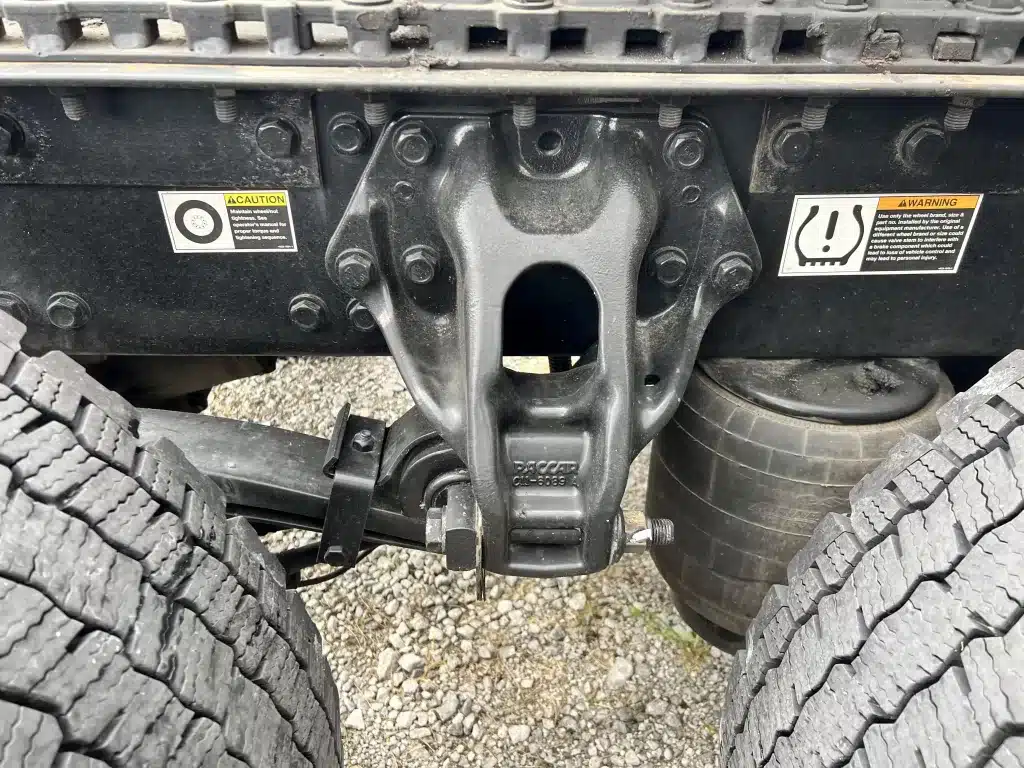
The Department of Transportation (DOT) in the United States does not have specific regulations pertaining to the steering and suspension systems of commercial motor vehicles (CMVs), including semi-trucks, within the Federal Motor Carrier Safety Regulations (FMCSRs). Instead, these components are typically regulated at the state level and governed by state vehicle safety inspection programs. State-level regulations on steering and suspension components may vary, but they generally require that these systems be in good working order to ensure the safety and roadworthiness of CMVs. Here are some common areas of concern and inspection related to steering and suspension components:
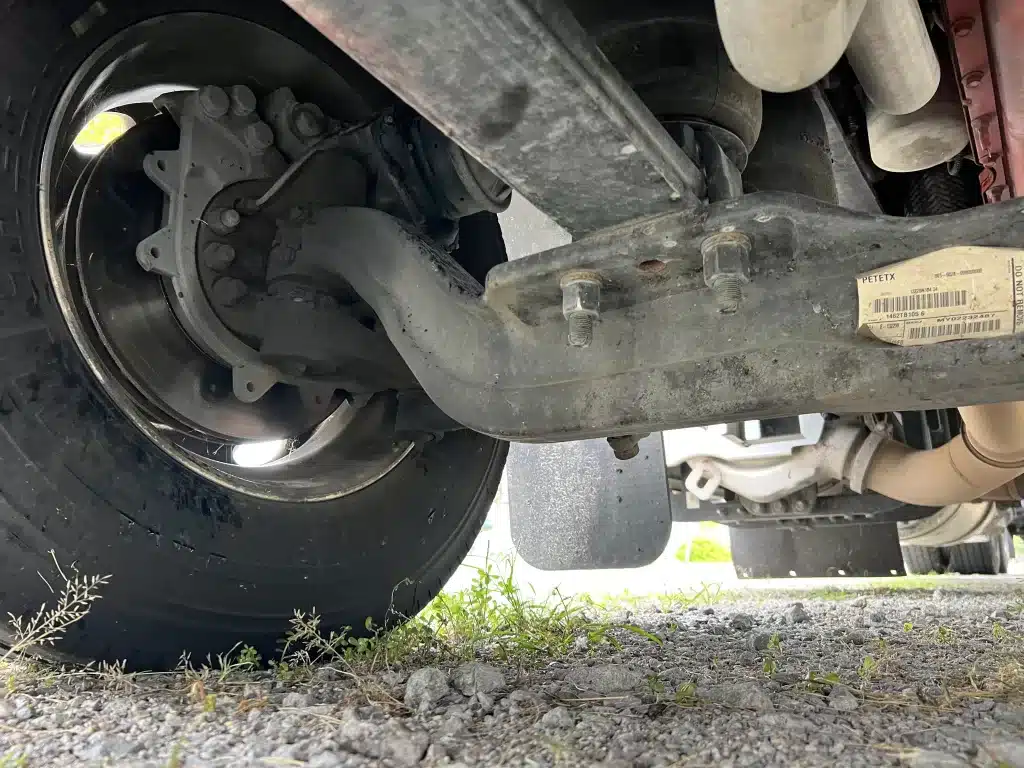
Steering System: Commercial Truck Inspections often involve checking the steering system for issues such as excessive play, worn components, and proper alignment. The steering wheel should not have excessive play, and all steering linkage components should be in good condition. Tie Rods and Drag Links and components are essential for steering control. Inspections may assess their condition and attachment points to ensure they are secure and not excessively worn. Proper wheel alignment is critical for steering and handling. Vehicles with misaligned wheels may experience reduced control and tire wear. Inspectors may check for proper alignment during inspections.
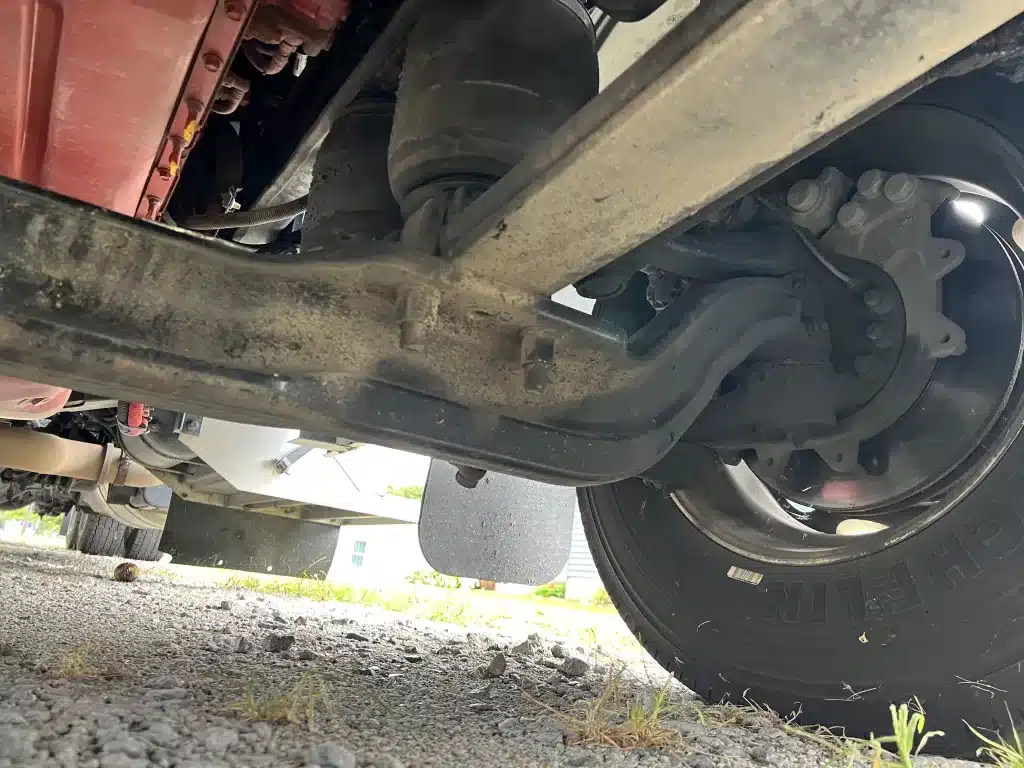
Suspension System: Commercial Truck Inspections may focus on various aspects of the suspension system, including the condition of springs, shock absorbers, and suspension mounts. Any damaged or worn components can affect ride stability and safety. The condition of bushings and mounts within the suspension system may be inspected for wear or damage. Damaged bushings can lead to instability and reduced ride comfort. The condition and performance of shock absorbers and struts can impact vehicle stability and control. Damaged or worn shocks may affect the ability to control the vehicle effectively. For CMVs equipped with air suspension systems, inspections may involve checking for air leaks, proper inflation, and the overall condition of air suspension components. In some cases, inspectors may examine the kingpin, which is a critical component of the steering system, to ensure it’s not excessively worn or damaged.
It’s important to note that while DOT regulations do not specify these requirements at the federal level, state-level Commercial Truck Inspections programs may have their own specific guidelines for steering and suspension component inspections. CMV operators and fleet managers should be aware of their state’s regulations and conduct regular inspections and maintenance to ensure the safe and proper functioning of these critical systems.
Frame and Chassis: The vehicle’s frame and chassis should not have cracks or significant rust that compromises structural integrity. The frame of a semi truck should be inspected prior to each trip according to the DOT Commercial Truck Inspection requirements.
The Department of Transportation (DOT) in the United States does not have specific regulations pertaining to the frame and chassis of commercial motor vehicles (CMVs), including semi-trucks, within the Federal Motor Carrier Safety Regulations (FMCSRs). Instead, the construction and maintenance of the frame and chassis are typically governed by various vehicle safety standards, which may be regulated at both the federal and state levels. Here are some key considerations related to Commercial Truck Inspections of the frame and chassis of CMVs.
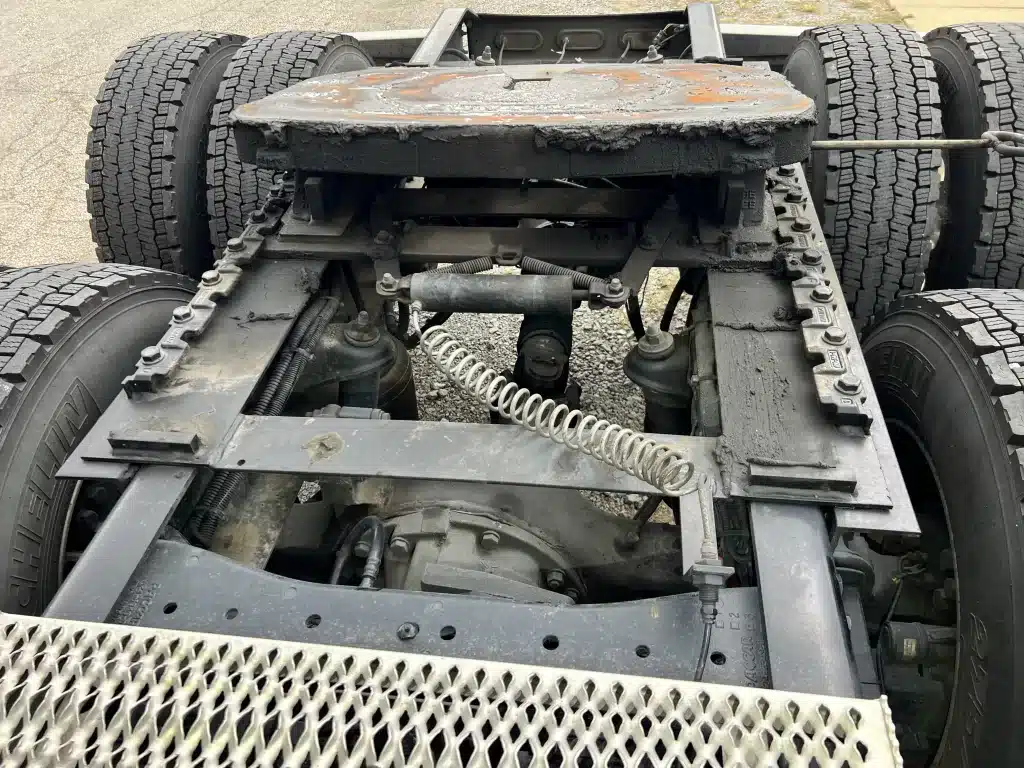
Structural Integrity: The frame and chassis of a CMV must maintain structural integrity. This means they should be free from significant cracks, corrosion, or damage that could compromise the vehicle’s overall strength. Any modifications to the frame or chassis should be done in compliance with applicable regulations. Non-standard alterations should be inspected and approved by qualified personnel to ensure safety. The placement of axles on the frame and chassis should adhere to federal and state regulations regarding weight distribution and axle spacing to avoid overloading and maintain stability. The mounts for the suspension components, such as leaf springs or airbags, should be secure and free from damage. Proper attachment of suspension components is crucial for vehicle stability. The fifth wheel on the chassis should be properly secured and in good working condition to ensure a secure connection with the trailer. Crossmembers and other support structures on the chassis should be in good condition and properly attached to maintain the overall structural integrity of the vehicle. Some CMVs may have specific requirements related to the placement and configuration of exhaust systems to comply with emissions regulations.
It’s important to note that while DOT regulations may not explicitly outline Commercial Truck Inspections requirements for the frame and chassis, various federal agencies, such as the National Highway Traffic Safety Administration (NHTSA) and the Environmental Protection Agency (EPA), establish standards related to vehicle construction, safety, and emissions. Additionally, state-level regulations may apply to aspects of CMV construction and modifications.
CMV operators and maintenance personnel should be aware of these standards and regulations to ensure that the frame and chassis of their vehicles are in compliance and maintain the safety and integrity of the vehicle. Regular Commercial Truck Inspections and maintenance are essential to identify and address any issues related to the frame and chassis.
Exhaust System: DOT Commercial Truck Inspections state the exhaust system must be free from leaks, and the muffler should function correctly to reduce noise. Before purchasing a semi truck or commercial truck always be certain to perform a Commercial Truck Inspection to ensure the exhaust system passes a DOT inspection.
The Department of Transportation (DOT) in the United States does not have specific regulations solely pertaining to exhaust systems for commercial motor vehicles (CMVs), including semi-trucks, within the Federal Motor Carrier Safety Regulations (FMCSRs). However, exhaust systems on CMVs are subject to various federal and state regulations and standards set by other agencies. Here are key considerations related to exhaust systems for CMVs:
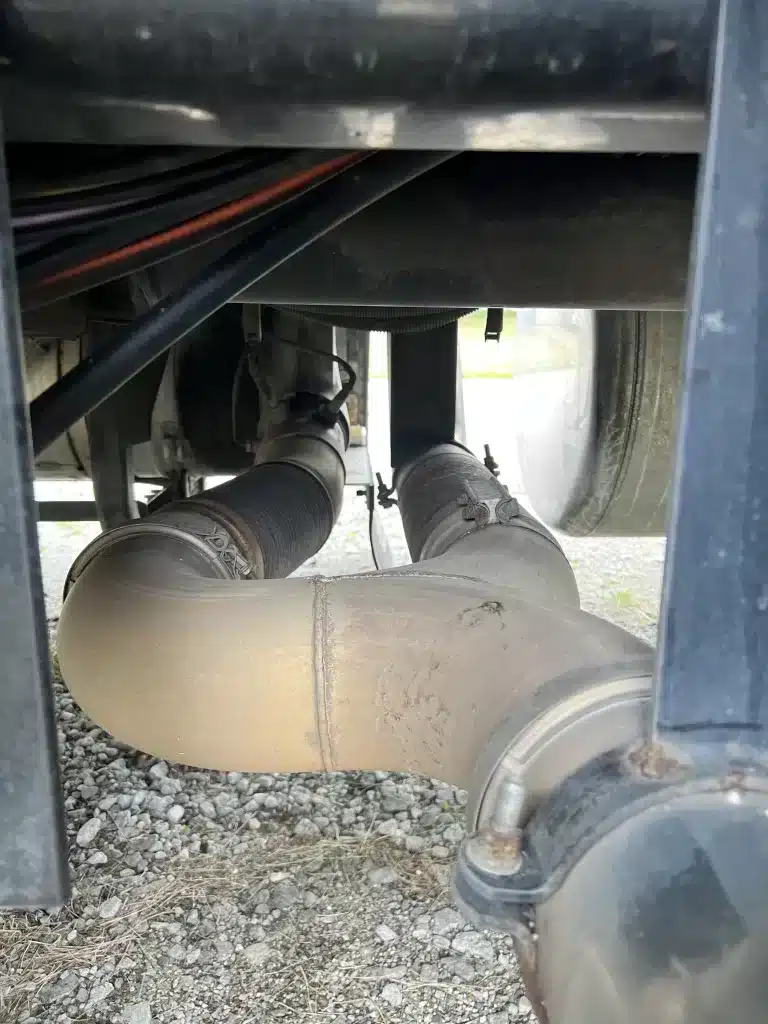
Environmental Protection Agency (EPA) Emissions Standards: The EPA sets emissions standards for CMVs, including regulations governing the design and emissions control components of exhaust systems. CMVs must meet these emissions standards to reduce air pollution and comply with federal law. CMVs are often equipped with emissions control devices, such as diesel particulate filters (DPF) and selective catalytic reduction (SCR) systems, to reduce harmful exhaust emissions. These devices must be properly maintained and in good working order to comply with emissions regulations. Exhaust systems should be free from leaks, as exhaust leaks can introduce harmful gases, including carbon monoxide, into the cabin or environment. Inspections should check for leaks in exhaust pipes, mufflers, and other components. While not specifically under DOT jurisdiction, various states have regulations governing vehicle noise emissions. CMVs must comply with these state-level noise regulations, which may include exhaust noise limits. Some states regulate the minimum height of exhaust stacks on CMVs to reduce the risk of harmful exhaust gases entering nearby vehicles or the driver’s cabin.
Tampering with Emissions Controls: Tampering with emissions control devices or removing them is illegal under federal and state laws. CMVs must maintain their emissions control systems in compliance with EPA regulations.
It’s important to note that while DOT regulations may not specifically address exhaust systems, CMV operators should be aware of and comply with applicable federal and state emissions and noise regulations. Compliance with these regulations is essential to reduce environmental impact, ensure road safety, and avoid legal penalties.
CMV operators and maintenance personnel should consult both federal and state regulations, as well as manufacturer guidelines, to ensure that exhaust systems and emissions control components are properly maintained and in compliance with the law. Regular Commercial Truck Inspections and maintenance are crucial to keep exhaust systems in good working order.
Mirrors: All mirrors, including side mirrors and rearview mirrors, must be intact and positioned for adequate visibility.
The Department of Transportation (DOT) in the United States has specific regulations regarding mirrors for commercial motor vehicles (CMVs), including semi-trucks. These regulations are outlined in the Federal Motor Carrier Safety Regulations (FMCSRs) found in Title 49 of the Code of Federal Regulations (CFR), Part 393 – Parts and Accessories Necessary for Safe Operation. Here are key DOT regulations related to mirrors for CMVs:
Rearview Mirrors: CMVs must be equipped with rearview mirrors that provide the driver with an adequate view of the road to the rear of the vehicle. There should be a mirror mounted on the driver’s side and one on the passenger’s side. Convex (or “spotter”) mirrors may be required on the passenger’s side of the vehicle to provide a wider field of vision and reduce blind spots. These are particularly important for large vehicles. Mirrors with flat reflective surfaces should be used for rearview mirrors to provide an accurate representation of objects behind the vehicle. Mirrors should be adjustable to allow the driver to set them to provide the best possible view of the road and surroundings. Mirrors should be securely mounted to the vehicle and positioned in a way that minimizes vibration and maintains proper alignment. Mirrors must be properly maintained to ensure they remain clean, clear, and free from obstructions that could hinder the driver’s visibility. If a mirror is damaged or missing, it should be replaced promptly to maintain proper visibility. Mirrors should be of an adequate size and configuration to provide the driver with a clear and complete view of the road behind the CMV. In some cases, CMVs may be equipped with heated or defrosting mirrors to prevent fogging or ice buildup in inclement weather. CMVs with wide loads or trailers may require extended mirrors (also known as “west coast” mirrors) to provide a wider field of view.
It’s crucial for CMV operators and maintenance personnel to be knowledgeable about these regulations to ensure that mirrors on their vehicles comply with DOT requirements. Commercial Truck Inspections should outline and ensure properly maintained and adjusted mirrors are essential for the safety of the driver and other road users, as they help minimize blind spots and improve visibility when changing lanes or maneuvering the CMV.
Safety Equipment: CMVs should be equipped with safety features such as seat belts, airbags, and anti-lock brake systems (ABS), which should all be in working order.
The Department of Transportation (DOT) in the United States has specific regulations concerning safety equipment for commercial motor vehicles (CMVs), including semi-trucks. These regulations are outlined in the Federal Motor Carrier Safety Regulations (FMCSRs) found in Title 49 of the Code of Federal Regulations (CFR), Part 393 – Parts and Accessories Necessary for Safe Operation. Here are key DOT regulations related to safety equipment for CMVs:
Emergency Equipment: CMVs must carry essential emergency equipment, including: Fire extinguishers which must be suitable for extinguishing fires involving the types of materials transported and readily accessible. Adequate spare fuses should be on hand to replace blown fuses in electrical systems. CMVs must have warning triangles or other warning devices to alert other drivers when the vehicle is stopped on the roadside. While not explicitly required by the DOT, it is advisable for CMVs to carry a first aid kit to provide basic medical assistance in case of injuries or emergencies. CMV drivers should have reflective vests or other high-visibility clothing available to wear when working on or around the vehicle on the roadside. CMVs should carry flares or safety triangles to mark the vehicle’s location in the event of a breakdown or emergency. Spare bulbs for exterior lamps and turn signals should be available to replace burned-out bulbs promptly. These items should be added to any fleet or Commercial Truck Inspection process.
It’s important for CMV operators to regularly perform Commercial Truck Inspections, maintain, and replace safety equipment as needed to ensure it remains functional and readily available in case of emergencies. Compliance with these regulations helps enhance the safety of CMV operations and the well-being of drivers and other road users.
Cargo Securement: If carrying cargo, it must be properly secured to prevent shifting or falling during transit.
Exterior Condition: The CMV should be free from significant dents, rust, or damage that could affect safety or aerodynamics.
Windows and Windshield: Windows and the windshield should be free from large cracks or defects that obstruct the driver’s view.
Horns: The vehicle’s horn should be in working order and audible.
Fuel System: The fuel system must be free from leaks, and the fuel cap should seal properly.
Regular Commercial Truck Inspections and maintenance, often outlined in a motor carrier’s maintenance program, are critical to ensure that a CMV meets these requirements and is safe for operation on the road. CMV operators and companies are responsible for adhering to these regulations to maintain safety and compliance.
